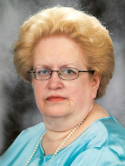Operational radiation safety for PET-CT, SPECT-CT, and cyclotron facilities Journal Article
| Authors: | Zanzonico, P.; Dauer, L.; St. Germain, J. |
| Article Title: | Operational radiation safety for PET-CT, SPECT-CT, and cyclotron facilities |
| Abstract: | Positron emission tomography (PET) and single-photon emission computed tomography (SPECT) are well- established and indispensable imaging modalities in modern medicine. State-of-the-art computed tomography (CT) scanners have now been integrated into multi-modality PET-CT and SPECT-CT devices, and these devices, particularly PET-CT scanners, are dramatically impacting clinical practice. F-fluorodeoxyglucose (FDG), by far the most widely used radiopharmaceutical for clinical PET imaging in general and oncologic PET imaging in particular, is highly accurate in detecting (∼90%) and staging many types of tumors, monitoring therapy response, and differentiating benign from malignant lesions. Several factors, including the relatively high administered activities [e.g., 370-740 MBq (10-20 mCi) of FDG], the high patient throughput (up to 30 patients per d), and in particular, the uniquely high energies (for a diagnostic setting) of the 511-keV positron-negatron annihilation photons, make shielding requirements, workflow, and other radiation protection issues important considerations in the design of a PET or PET-CT facility. The Report of Task Group 108 of the American Association of Physicists in Medicine (AAPM) provides a comprehensive summary of shielding design and related considerations, along with illustrative calculations. Whether in the form of a PET-CT or a SPECT-CT device, the introduction of CT scanners into a nuclear medicine setting has created new and complex radiation protection issues concerning the radiation burden and attendant risks accrued by patients undergoing such multi-modality procedures (especially in those instances in which higher-dose, diagnostic-quality CT studies are done as part of the PET-CT or SPECT-CT exam). In addition, because PET is dependent on the availability of short-lived F (Tp = 110 min) primarily in the form of FDG, and other short-lived positron emitters such as C (20 min), N (10 min), and O (2 min), cyclotrons for production of medically applied radionuclides and associated radiochemistry facilities are now widespread (well over 100 worldwide) and present their own radiation safety issues. In addition to the radioactive product, sources of exposure include neutrons and radioactive activation products in the various cyclotron components and surrounding shielding. Nonetheless, published studies have shown that the radiation doses to personnel working in cyclotron and associated radiochemistry facilities, as well as in PET or PET-CT and SPECT or SPECT-CT facilities, can be maintained below, and generally well below, the pertinent regulatory limits. This presentation will review the basic radiation safety aspects, including shielding and workflow, of these increasingly important and increasingly numerous facilities. The radiation burden accrued by the patients undergoing PET-CT or SPECT-CT exams will be considered as well. ©2008Health Physics Society. |
| Keywords: | treatment response; conference paper; radiation dose; cancer staging; positron emission tomography; diagnostic accuracy; radiopharmaceuticals; differential diagnosis; patient monitoring; radiation injury; radiation exposure; radiation dosage; standard; chemistry; diagnostic agent; image enhancement; diagnostic value; contrast enhancement; image quality; laboratory; fluorodeoxyglucose f 18; computer assisted emission tomography; fluorodeoxyglucose f18; positron-emission tomography; radiation injuries; radiopharmaceutical agent; ionizing radiation; radiation, ionizing; nuclear medicine; safety; radioisotope; equipment design; radiation safety; single photon emission computer tomography; radioisotopes; molecular weight; photon; environmental exposure; cyclotron; cyclotrons; computed tomography; radiation shield; risk management; radiation protection; radiochemistry; tomography, emission-computed, single-photon; computed tomography scanner; carbon 11; national council on radiation protection and measurements; oxygen 15; nitrogen 13; shielding; architectural barrier |
| Journal Title: | Health Physics |
| Volume: | 95 |
| Issue: | 5 |
| ISSN: | 0017-9078 |
| Publisher: | Lippincott Williams & Wilkins |
| Date Published: | 2008-11-01 |
| Start Page: | 554 |
| End Page: | 570 |
| Language: | English |
| DOI: | 10.1097/01.HP.0000327651.15794.f7 |
| PUBMED: | 18849690 |
| PROVIDER: | scopus |
| DOI/URL: | |
| Notes: | --- - "Cited By (since 1996): 4" - "Export Date: 17 November 2011" - "CODEN: HLTPA" - "Source: Scopus" |
Altmetric
Citation Impact
BMJ Impact Analytics
MSK Authors
-
 362
362Zanzonico -
 174
174Dauer -
 61
61St Germain
Related MSK Work


